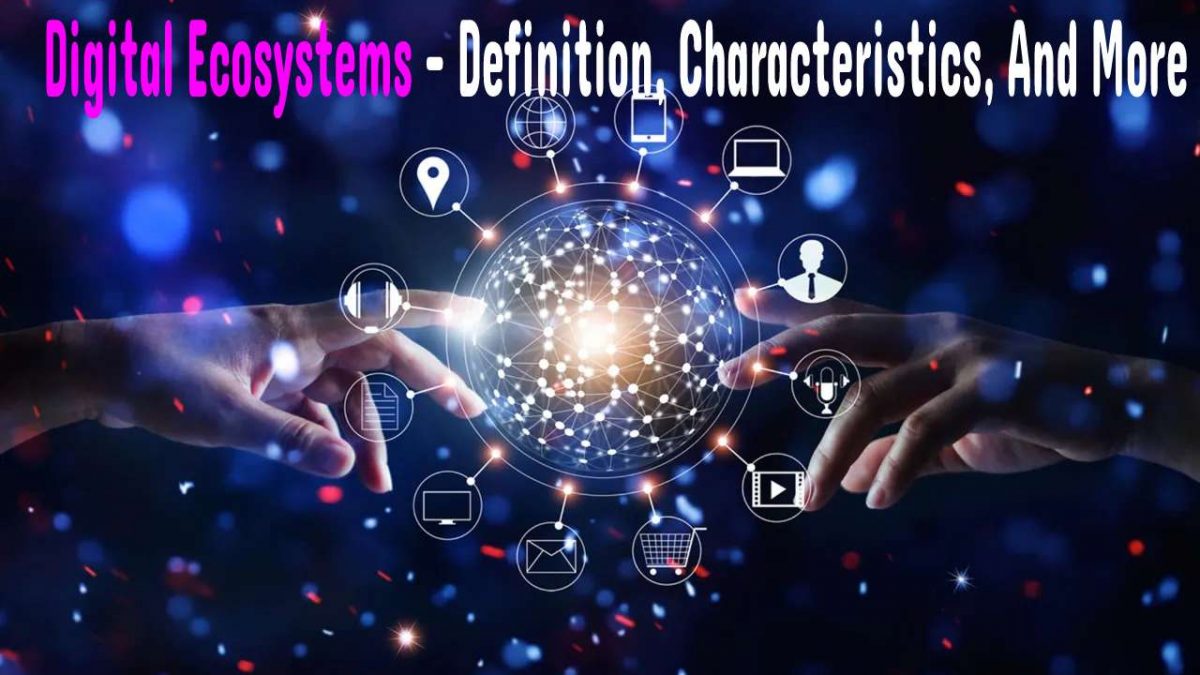Table of Contents
Digital Ecosystems- Definition
Digital ecosystems: A word so used today, but at the same time that few define. For Gartner Research: “A digital ecosystems is an interdependent group of companies, people, and things that share standardized digital platforms for a mutually beneficial purpose, such as commercial gain, innovation, or common interest. Digital ecosystems allow you to interact with customers, partners, adjacent industries, and even your competition.”
Where Do Digital Ecosystems Come From?
If you are single of those who sell on Instagram and talk to your customers on Whatsapp, you have a digital ecosystems. They are intrinsic to having digital assets; they have always been there, although with less prominence and complexity.
When I want to buy something online, we face an digital ecosystem with a website. A server, a payment gateway, order notification emails, people who pack the order, etc.
Today they have become more relevant, they are beginning to be larger. And we are becoming more aware of them for reasons such as:
Speed For Change
Acquiring specific abilities by themselves would take time. That time makes a difference. So the decisions to have particular skills of their own and others of third parties are a good way forward, avoiding dispersion and obsolescence. It is the thought of ‘I need it. Someone else already does it well, ‘it is not my core business, ‘I pay for someone else to do it, and ‘we all benefit.’
Liquid Encounters
Faced with so much supply and so many working styles. Not only from large but also from small players, the consumer lives a liquid experience, which suggests that I, as a user, do not demand experiences from brands in the same category but even from brands that have nothing to do with others; for example, if I need a credit card,
I do not expect my bank to deliver it in 15 days and with pre-approval, as other banks do, which would surprise and attract me.
The focus is no longer only on my product or service but on being flexible to reach the user in terms of experience. Service, and logistics. To do it in a more than ideal way will require allying with or involving others in processes that already do it effectively.
What Are The Characteristics Of A Healthy Digital Ecosystem?
As we have seen so far, ecosystems are connections between many tools, people, and contact points that ultimately become evident in the user’s perception.
When we refer to how healthy a digital ecosystems are, we refer to how capable it is of solving without complications, without downtime, without waste for the business, everything that must happen when a user approaches the brand, understanding the approach not only the purchase but a conversation or a guarantee.
An unhealthy digital ecosystems can take a heavy toll on productivity. Capital, processes, and reputation with the user. Just imagine that you have a chat available for the user that the business no longer attends. But the user does use. What a lousy image!; or when a user goes to make a purchase, the payment method does not work; what a waste of effort.
If the assets, systems, suppliers, and tools within digitalecosystem do not communicate or are obsolete, we waste time, effort, and, therefore, money. When you have a store, and the work team does not know about the new products, they serve the buyers very slowly, and there is a long waiting line because the processes do not work.
Interconnection And Points Of Confluence -Digital Ecosystems
Take care of having the necessary actors and feeding each other so that they live in the long term; think of assets, tools, and focused people and to which many others will go.
digital ecosystem can choose to be omnichannel or multichannel; the important thing is not to be full of isolated assets that nobody identifies or that make us invest more than necessary to sustain them. As a personal recommendation, it is essential that the spotlights are your own and not from third parties to play and grow with our rules.
Government
It’s easy to lose sight of and control of what’s essential in larger digital ecosystems; make sure the IT department or someone in charge has complete visibility of all integrated solutions or systems.
Both yours and those of third parties; make sure there’s enough know-how to handle updates or new participants.
Even if you have critical suppliers associated with you, check that the number that governs neuralgic processes within the digital ecosystem will not exaggerate.
Goals
Does each of the actors within the digital ecosystem meet the objectives that the company has proposed? It will focus on how it invests in tools, people, or process automation, whether or not you allocate money for this.
Technology
Take care of each platform’s updating, integration, and obsolescence that makes up the ecosystem. Outdated systems lead to a breakdown in communication between actors and information vulnerability (others obtain our data); many non-integrated systems lead to poor user experience, confusion, reprocessing, and even work that we should not do internally.
Digital Ecosystems – Data
If what led us to pay more attention to digital ecosystems is the liquid experience of the user and the speed of change, it is inevitable to continually analyze the efficiency of the digital ecosystem in the face of the experience lived by the user and especially in the front of the objectives that the user has.
Deal the data will provide us with a way to optimize, accelerate, find points of improvement and advantage, remove actors from the ecosystem or add, in conclusion, to facilitate the growth of the business in digital ecosystems channels.

